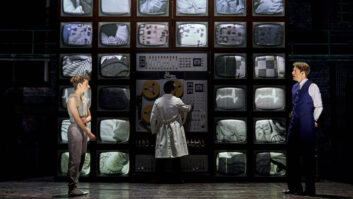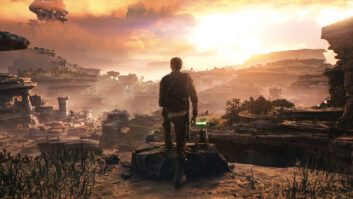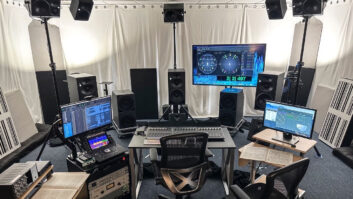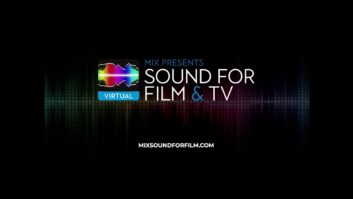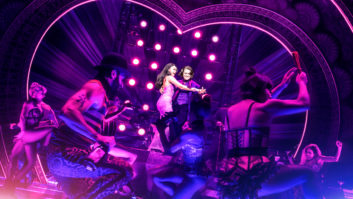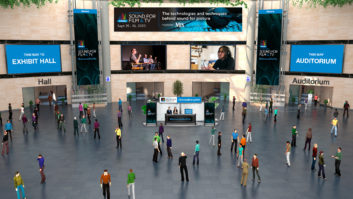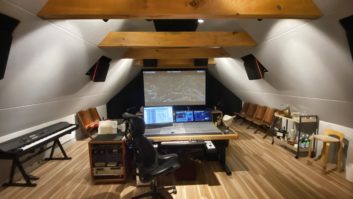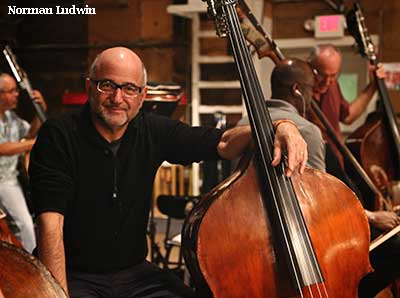
If you plan on building a long-term career in the competitive L.A. recording industry, it doesn’t hurt to wear multiple hats. Ask Norman Ludwin. A highly accomplished and in-demand double bass player whose musicality has helped bring to life scores for Jurassic World, Star Trek Into Darkness, WALL-E and dozens of other major motion pictures, Ludwin is an orchestrator who has fleshed out scores for Michael Giacchino and Christopher Young, among many others. He’s also an accomplished composer in his own right. Throw in the fact that he’s been teaching orchestration in the UCLA Extension Film Scoring Program for the past 15 years and has published six books in the last two years, and you get the point—Ludwin has carved out a unique place in the Hollywood film industry. Mix spoke to him about his skill set, and also had the opportunity to chat with mixer Joel Iwataki, with whom Ludwin worked on several important projects.
When did you begin to augment your work as a session player with orchestration gigs?
Ludwin: I began to work as an orchestrator about 10 years ago on student projects, and started working for Michael Giacchino in 2012.
Does your experience as a player give you insights that you wouldn’t have if you hadn’t played in sessions?
Definitely! Having played in orchestras since I was a kid gives me so much background on what will be effective in the recording sessions. I’m also very lucky to not just play the bass in orchestras, but also the bassoon and trumpet. This has given me knowledge of woodwinds and brass, which has proved immensely valuable. I tell all my students to try and get familiar with as many orchestral instruments as they have the time and energy to learn.
As the orchestrator, are you present at recording sessions if you’re not working as a player?
Depends on the project. Often the main orchestrator will be expected to attend the recording session when they are scored in L.A. I’m fortunate when working for Michael to be playing on the session as well as orchestrating cues.
What makes a good sketch score, one that makes it easiest for the orchestrator to implement a composer’s thinking?
I prefer as complete a sketch from the composer as possible, so that their intentions are crystal clear. It’s also helpful to receive an MP3 of the sketch, which is almost always developed within a digital audio workstation.
Do you also perform in concert?
Yes. Making a living as a professional musician means trying to balance recording work with live playing as much as possible.
What made you decide to write books on composition and arranging?
I have been teaching orchestration for 15 years in the UCLA Extension Film Scoring Program, the Musicians Union, and at the Cornell School of Contemporary Music. I started conceiving the idea of putting my lessons into book format several years ago when I realized that there was a need for a more practical approach to orchestration than what was available. I also felt that my access as a working orchestrator to contemporary film scores was unique and gave me a rare insight.
You worked as an orchestrator on the television show Lost, which used a lot of “modern” classical effects. To what extent are you as an orchestrator asked to come up with the proper notational devices when a composer wants, say, a Penderecki or Corigliano “effect” but doesn’t know how to write it?
Often I will be asked how to notate a certain sound, especially aleatoric effects. Fortunately, because most of these effects [glissando to highest pitch, for example] are so popular, there are established notation conventions. The TV series Lost was an excellent use of 20th century aleatoric effects. Partly because of the unusual instrumentation that Giacchino chose [strings, harp, piano, percussion and trombones], and the locale of the show on a desert island, the modern instrumental effects lent themselves perfectly to establish the mood director J.J. Abrams was searching for.

Mixing With Joel Iwataki
Joel Iwataki has been recording and mixing music for films since the mid-1980s, having begun his career by arranging for singers and composing music for documentaries and educational films. Iwataki always mixed his own scores, and over time other composers would ask him to mix their projects. After meeting film composer Elliot Goldenthal, Iwataki decided to make film score mixing his career.
To date, Iwataki has mixed more than 100 scores, including Elliot Goldenthal’s Alien 3, Batman Forever, Titus and the Oscar-winning score for Frida. He was behind the desk for John Corigliano’s Oscar-winning score for The Red Violin, and more recently Star Trek Into Darkness, Dawn of the Planet of the Apes, and the recently released Tomorrowland and Jurassic World, which was scored by Michael Giacchino.
Do you work exclusively in commercial studios, or do you have your own place, too?
Iwataki: I usually work in studios that can accommodate large orchestras, sometimes over 100 musicians. Among these are the Fox, Sony and Warner Brothers scoring stages in L.A., Manhattan Center in New York, Abbey Road and Air Lyndhurst in London, and Teldex and Funkhaus Nalepastrasse in Berlin. At home I only have a small writing setup.
What is your preferred recording medium and console setup?
I prefer working with the Neve 88R. It has a warmer sound for film scores while still being able to hit the big dynamics in an action score. The 88R with the Film Scoring panel can handle 96 tracks of orchestra with a big orchestral percussion section, as well as close-miked hand percussion and drum kit, electric and acoustic keyboards and guitars, 70-voice choir, and sometimes more than 100 tracks of synthesizers, samples and pre-recorded elements.
Do you prefer any one set of monitors for film mixing?
I use three ATC 100 A self-powered midfield monitors for my LCR. I’ve always liked their accuracy and evenness across the frequency range, and they have lots of punch for big action or for contemporary grooves and can sound as smooth and lush as the most enraptured adagio requires.
What is the main difference between mixing music for records and mixing for film?
Film scoring is a collaborative process where several elements—story, dialog, picture, sound design and music—are all working together to create a piece. Music for film needs to help tell the story and to fit in with the other elements that are also helping in their own way, all at the same time. Sometimes the music works overtly like in a rousing theme as the hero rides to the rescue, or when some dreadful thing is about to happen to a character we care about. And sometimes it works in a subtle way, unnoticeably whispering to the subconscious to heighten the emotional impact of what’s happening on-screen.
Over the years I’ve worked on a dozen film scores that Norman [Ludwin] has played on. He is one of a select group of musicians who can be counted on to play any style of music from classical to jazz to rock, make it sound real, make it real good, do it in tune, and do it in one or two takes. And Norman does it with a smile and good cheer—one of the most welcome assets in the studio.
